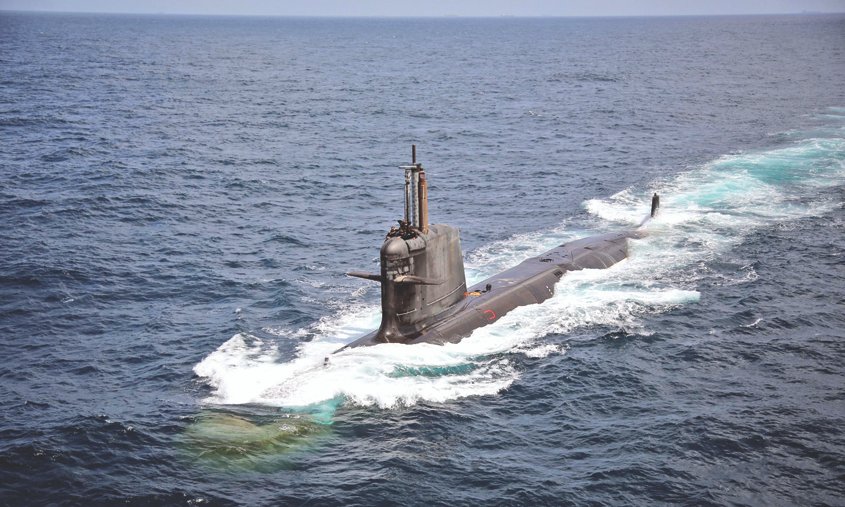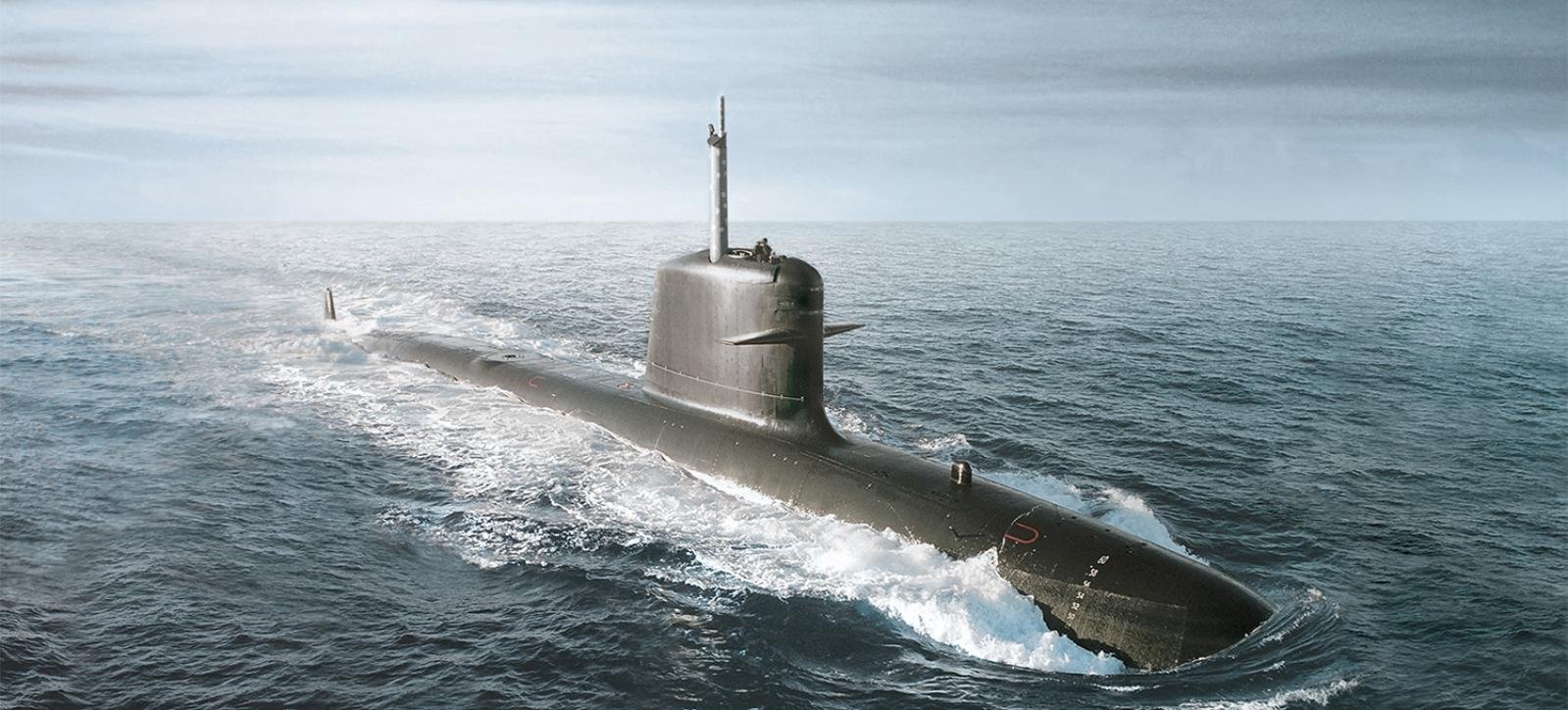
Challenges Faced by India’s Submarine Operations in the Indian Ocean Region
Recent developments regarding submarines in the Indian Ocean Region (IOR) carry significant implications for Indian security planners in the near and medium terms, necessitating prioritization by the incoming government poised to assume office in June.
In late April, the Pakistan Navy achieved a milestone with the launch ceremony of its inaugural Hangor-class submarine at the Wuchang shipbuilding group’s Shuangliu base in Wuhan, China. This submarine, an export variant based on the Chinese PLA Navy’s Type 039A/041 Yuan class, is scheduled for induction into the Pakistan Navy by 2028. Of particular note is its air-independent propulsion (AIP) system, providing a substantial boost to underwater endurance compared to conventional diesel-electric submarines. This advancement is poised to significantly augment Pakistan’s sea-denial capabilities in the Indian Ocean Region (IOR).
Despite the Indian Navy’s recognition of the necessity for an AIP-capable submarine since 1999, it has yet to acquire one. It was only in June 2021 that the Defence Acquisition Council of the Ministry of Defence finally sanctioned the long-awaited procurement of six conventional submarines for the Navy under Project 75(I). Given that most of the Navy’s conventional submarines are over 30 years old, their operational effectiveness is significantly compromised. Hence, Project 75(I) assumes paramount importance in enhancing the Navy’s underwater capabilities.
In the Modi 2.0 era, there has been a noticeable emphasis on achieving self-reliance, or atmanirbharta, in the defense sector to reduce import dependency. However, the execution of this initiative has fallen short of expectations. Under the framework of ‘strategic partnership’ projects, four significant platforms, including AIP-enabled submarines, have been identified for collaboration between Indian entities and foreign manufacturers, encompassing fighter aircraft, helicopters, and armored vehicles.
The submarine agreement under Project 75 (I) is estimated to involve around $5 billion (approximately Rs 44,000 crore), signifying a substantial investment. Over the past three years, two foreign manufacturers, one German and one Spanish, have been shortlisted, marking the initiation of the final evaluation phase. The German conglomerate TKMS (Thyssenkrupp Marine Systems) has formed a partnership with the public sector unit Mazagon Docks Ltd. (MDL), a collaboration that enjoys robust support from the German government.
Another competitive partnership under consideration involves the Indian private sector firm L&T and the state-owned Spanish shipbuilding yard Navantia. Indian naval teams conducted field evaluation trials of the TKMS offer in March, with the Spanish trials expected to conclude by June. Given that Project 75(I) represents a significant techno-commercial endeavor, intense competition is anticipated between the final contenders: the MDL-TKMS partnership and the L&T-Navantia consortium.
The significance of India acquiring AIP-capable submarines is evident. However, recent experiences with major defense acquisitions have painted a less-than-encouraging picture. The procurement of Rafale fighter aircraft from France serves as a prominent example. The suddenness of the final decision and the opacity surrounding technology transfer did little to advance India’s quest for self-reliance.
While several factors beyond technological and commercial considerations influence decisions on major military platforms, a cursory examination reveals a checkered history in the indigenous development of India’s submarine program. In the mid-1980s, India acquired its first HDW-Type 209 conventional submarine from West Germany with the intention of establishing an indigenous submarine production line at MDL.
However, this effort was tainted by a bribery scandal, which also implicated the Bofors artillery gun deal with Sweden. Consequently, the Rajiv Gandhi government abruptly terminated the entire submarine acquisition program, dealing a significant blow to indigenous efforts and resulting in substantial financial losses. Subsequent projects, including Project 75(I) with France for Scorpene-class submarines, faced challenges such as cost escalations, delays, and disputes over technology transfer.
In the domain of underwater maritime propulsion, AIP technology holds a unique position, with expertise scarcer even than that of nuclear propulsion. While India has successfully joined the exclusive group of nations capable of nuclear propulsion design and manufacturing, with assistance from Russia, AIP technology remains elusive. The indigenous AIP project undertaken by the Defence Research and Development Organisation is currently underway and shows promising progress, with expectations of successful certification in the near future.
Presently, Germany leads globally in AIP technology. India faces the challenge of balancing its immediate tactical requirements, such as the urgent induction of AIP-equipped submarines into the Navy, with the overarching strategic goal of enhancing indigenous AIP design and manufacturing capabilities in the long term.
This endeavor presents significant challenges, as expertise in underwater technology is closely guarded, and collaboration opportunities are scarce. The strategic cooperation between China and Pakistan on the Hangor-class submarine exemplifies longstanding collaboration between the two nations dating back to the 1970s. This partnership poses challenges to Indian interests, underscoring the complexities of regional dynamics.
The Indian Ocean Region (IOR) is on the cusp of witnessing a surge in Chinese-designed submarines, with both Pakistan and Bangladesh poised to acquire vessels from the PLA Navy. These submarines, alongside underwater drones and UDA systems, will profoundly influence the evolving naval competition in the region, spanning from the Arabian Sea to the Bay of Bengal.
To navigate this dynamic landscape effectively, New Delhi must demonstrate greater agility and resolve in its decision-making processes compared to previous approaches.



